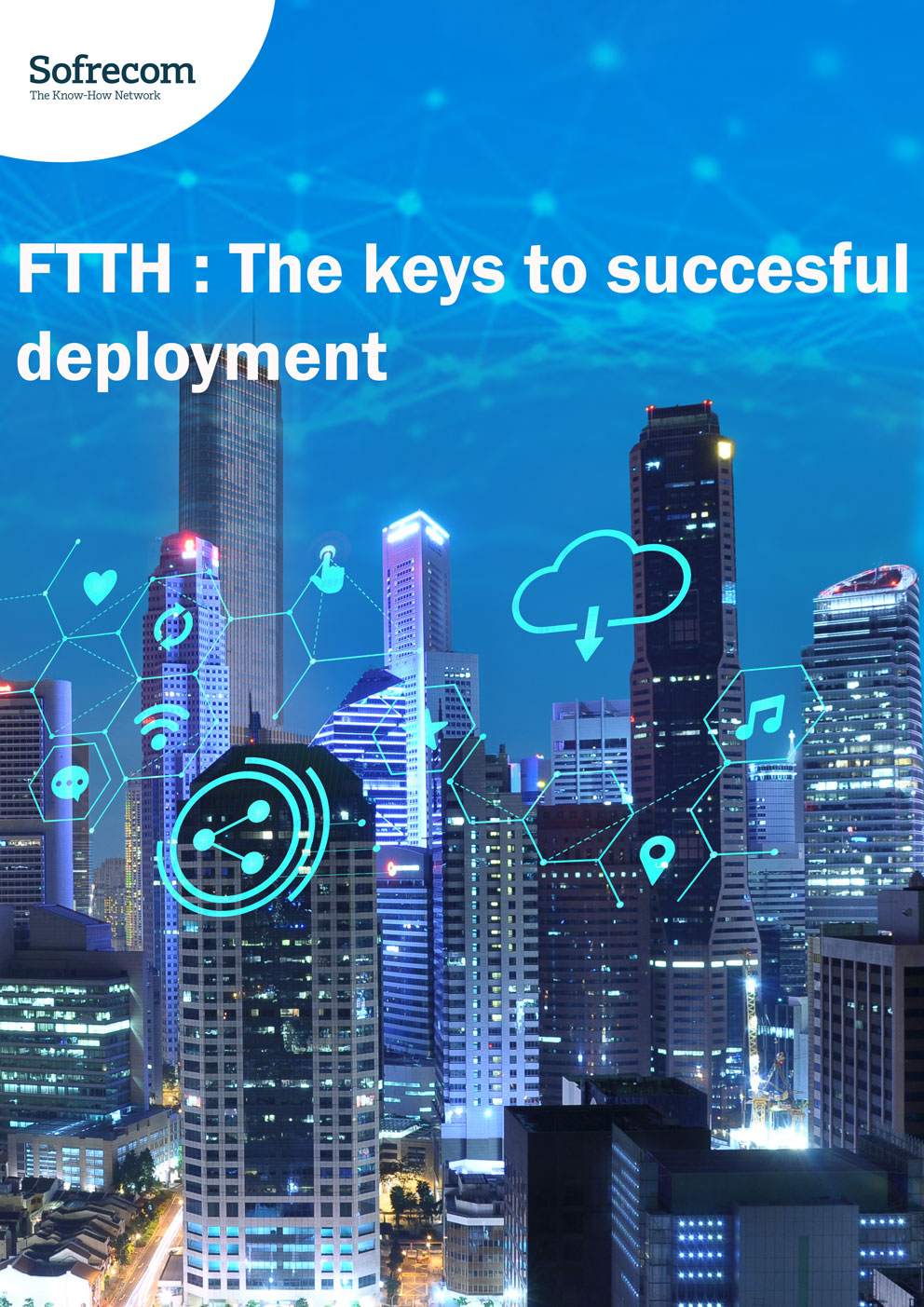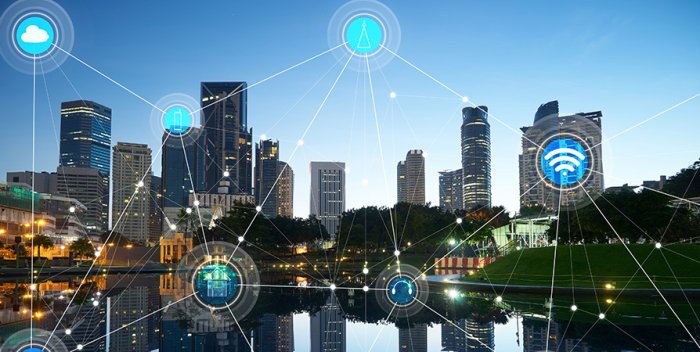
In the Enterprise market, the stakes are huge. Technologically, B2B customers are already used to complex - and expensive - connections to the operator's network. With its deployment, Fiber brings a violent paradigm.
Pierre Fiol

Economic stakes of fiber-optic broadband: competitiveness and territorial development
In all countries digital development brings major benefits: agile interactions between citizens, merchants, public and private services, administrations and government, easier access to knowledge and education, opening of new domestic and foreign markets for businesses... This societal and economic revolution supported by fast networks is now a global trend. No country can allow itself to stand on the sidelines.
Fiber provides the backbone of digital development which promises improvements in living conditions, business competitiveness, and the efficiency of public services and modernized government. By providing more bandwidth and better quality of service (the Achilles heel of copper networks), optical fiber will bring more equitable access to information for citizens and businesses.
From fiber to FTTH: careful thought required
The prime prerequisite for digital transformation is superfast fiber-optic backbones. FTTx services (Fiber-ToThe-Home, Fiber-To-The-Premises, etc.) are possible only over a high-speed access network able to transport vast quantity of data within the country or even across the world. Transport infrastructures and international interconnections are essential. Submarine cables, of which there are now 366 stretching more than 800,000 kilometers, and international programs are vital, notably in Africa (e.g. WARCIP, CAB, RCIP projects) and Asia where global network usage continues to explode.
While optical fiber is the only credible choice for modern network backbone infrastructures, the possibility of delivering services over fiber all the way to the end-user, without loss of quality or data speed, remains the Holy Grail. Yet FTTH is not an end in itself: the connection of the last kilometer remains a fundamental question even when an optical network is operative. FTTH is just one solution among others, what’s more a sometimes expensive one. It is pertinent only if the technical, geographic, financial and marketing conditions are right. This depends on several factors, including the existence of suitable urban infrastructures, geography and topography, favorable regulations, operators’ investment capacity, market needs,and others.
And of course FTTH must enable B2C or B2B services at attractively affordable prices. For telecoms providers, the decision to go for FTTH (or more generally FTTx) rather than wireless access (WiMAX, 4G, etc.), for example, is often complex. The order of the day is to adapt technology to the context, an approach that explains why 80% of Internet access in Africa is over cellular networks.
Fiber enhances national image, attractiveness and competitiveness
Fiber nevertheless remains the favorite choice in all markets. Nationwide FTTH connectivity provided by operators is today perceived as a strong indicator of societal modernity. In practice, fiber is used above all in new constructions, new districts, even new towns (for example, Diamnadio in Senegal) and new business parks. One reason for this is that governments and operators sometimes lack keyprerequisites such as a reliable national address system, geocoded databases and precise, up-to-date maps. Despite such difficulties, we should bear in mind that the provision of very broadband access has major impact on national image, attractiveness and competitiveness. Fiber helps attract foreign investment by providing infrastructures that meet the criteria of international groups. At a "general public" level, it offers tourists the same modern services that they enjoy at home. It encourages the emergence of new business parks and competitiveness clusters. It facilitates the development of innovative entrepreneurial ecosystems in which local talent and startups can thrive (Fintech, EdTech and Healthtech projects alone attracted almost 30% of startup investment in Africa1 in 2016. By speeding national and international data exchange, fiber enables the use of remote and hosted services (storage, security, SaaS, etc.), it allows the creation of national and regional datacenters, and it facilitates national and international cooperation.
A vector for social and territorial development
In 2015, landline Internet access prices were five times higher in emerging countries than in developed ones2. The world’s citizens have never enjoyed equality in terms of access to information! Despite announcements of global Internet coverage, inequalities still persist. Moreover, the inequalities have changed: many more people now enjoy at least some connectivity, but bandwidth and quality of service (QoS) are by no means uniform.
In some countries, however, fiber has been combined with other access technologies to connect "the last mile" as a means of opening up isolated rural populations and notably bringing them public healthcare and education services. In other countries, fiber-based services aid industry and agriculture; they are a vector for social and economic development. For example, fiber makes life easier for entrepreneurs, VSBs and SMEs by bringing them security, reliability and services that are not possible over ADSL. Talent and ideas are everywhere. Bringing high-quality VHSB to businesses at an affordable price is an excellent way of supporting entrepreneurial initiative and creativity in any country. Who could have imagined five years ago that the "Yabacon Valley"3 in Nigeria and the "Silicon Savannah"4 in Kenya would exist today?
Fiber can carry not only raw data, but also essential services such as education, healthcare and public administration, as well as economic services (such as OTT). This progressively gives countries an opportunity to develop local enterprises able to compete with big international players. iROKOtv5 in Nigeria and the pan-African VOD service BuniTV6 are good examples. The arrival of Netflix in Africa in 2016 is further proof of the maturity of local infrastructures and their ability to live up to consumer expectations.
Stimulating competition
Investment and infrastructure sharing schemes are vital for bringing fiber all the way to (or very close to) the enduser,
and they enable synergies between operators. Subject to rigorous regulatory control and clear competition rules for operators, cost sharing and combined efforts make fiber roll-out faster and more efficient. Such schemes encourage competition, which helps bring good-quality access and affordable B2C or B2B services to much larger populations. In addition to sharing between telcos, it is important to develop cooperation between operators and distribution players. Many industries such as oil, electricity and road and rail operators deploy fiber networks to serve their own business. These very high-speed trunks are often underexploited, which is a pity since they could contribute to the economic development of the regions they traverse. The result in Africa is that more and more players owning a fiber-optic network are positioning alongside conventional operators. Examples include ONCF (railroad) in Morocco and Sonatrach (oil/gas) and Sonelgaz (electricity/gas) in Algeria.
Specific challenges in every market
B2C market: democratize access to information, ccompany the evolution of needs and anticipate future digital usagesIn addition to the complexity of fiber deployment, operators face marketing challenges that differ according to market maturity. On the most mature markets (where FTTH is most easily implemented), fiber brings a promise of new services such as 4K, content, cloud gaming and online storage. The most modern services become a reality with unprecedented comfort and user experience.
On emerging markets, fiber helps to democratize quality Internet access and stimulate new offers and services. Only 15% of Africans have Internet access at home, while 29% of them already use broadband on their cellphone8. Although fiber is not expected to substantially change this balance, at least in the short term, it will enhance residential connectivity and even drive mobile Internet growth by providing transport infrastructure that lives up to users’ expectations.
B2B market: access to the digital world for all enterprises
The potential benefits of fiber for enterprises are extraordinary. B2B users are already familiar with complex
– and expensive – connections to operators’ networks, leased lines for example. Fiber brings a radical paradigm shift with the possibility of exploiting enormous bandwidth (as well as top-notch QoS) at a much more affordable price. This is a radical change for operators too on certain segments, notably B2B access offers which were formerly too expensive for most businesses, especially small and mid-size ones.
Fiber therefore makes the compelling promise of boosting business activity and opening market opportunities for enterprises, and of expanding operators’ customer bases – provided they accept the shift from a business model based on margin to one based on volume.





